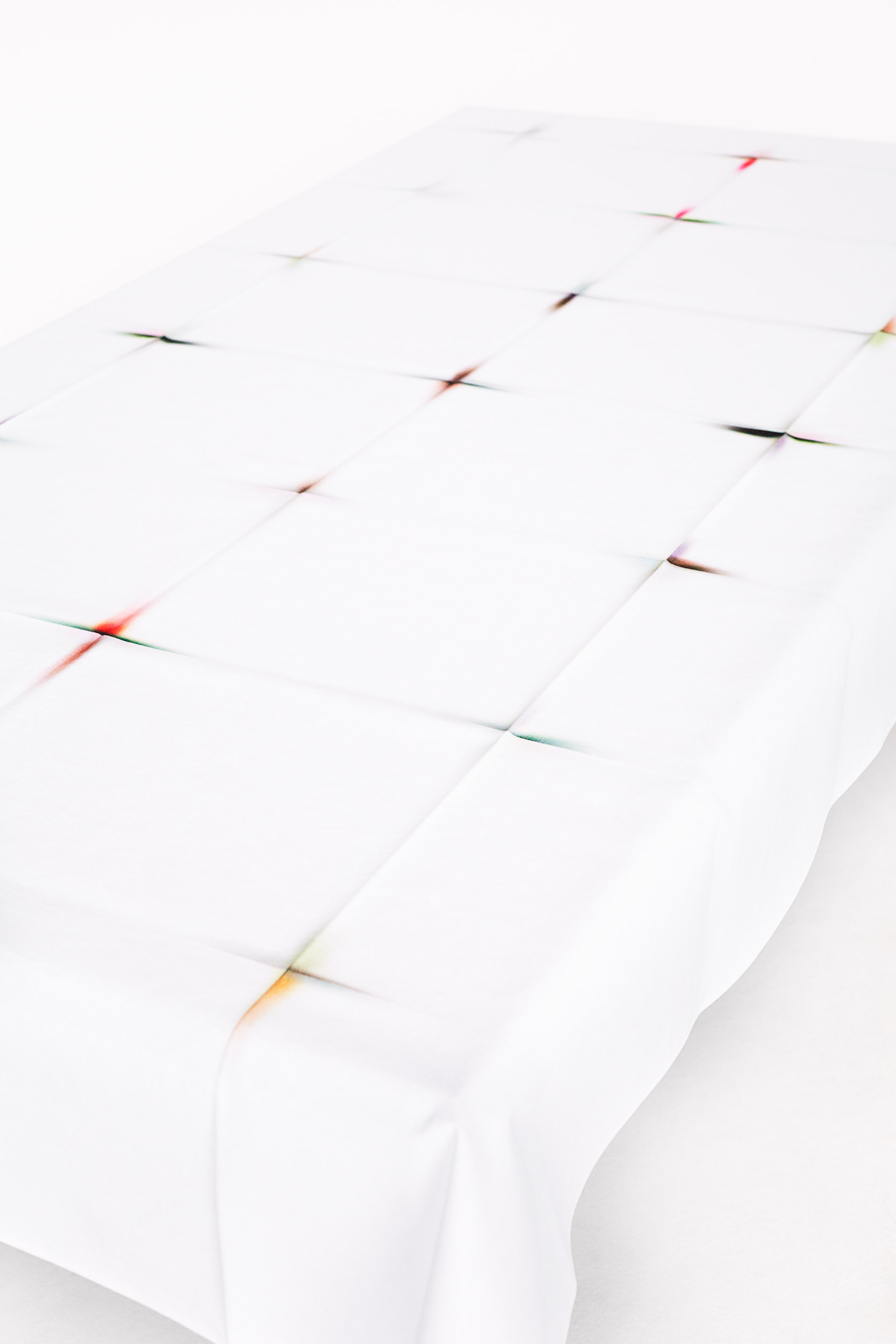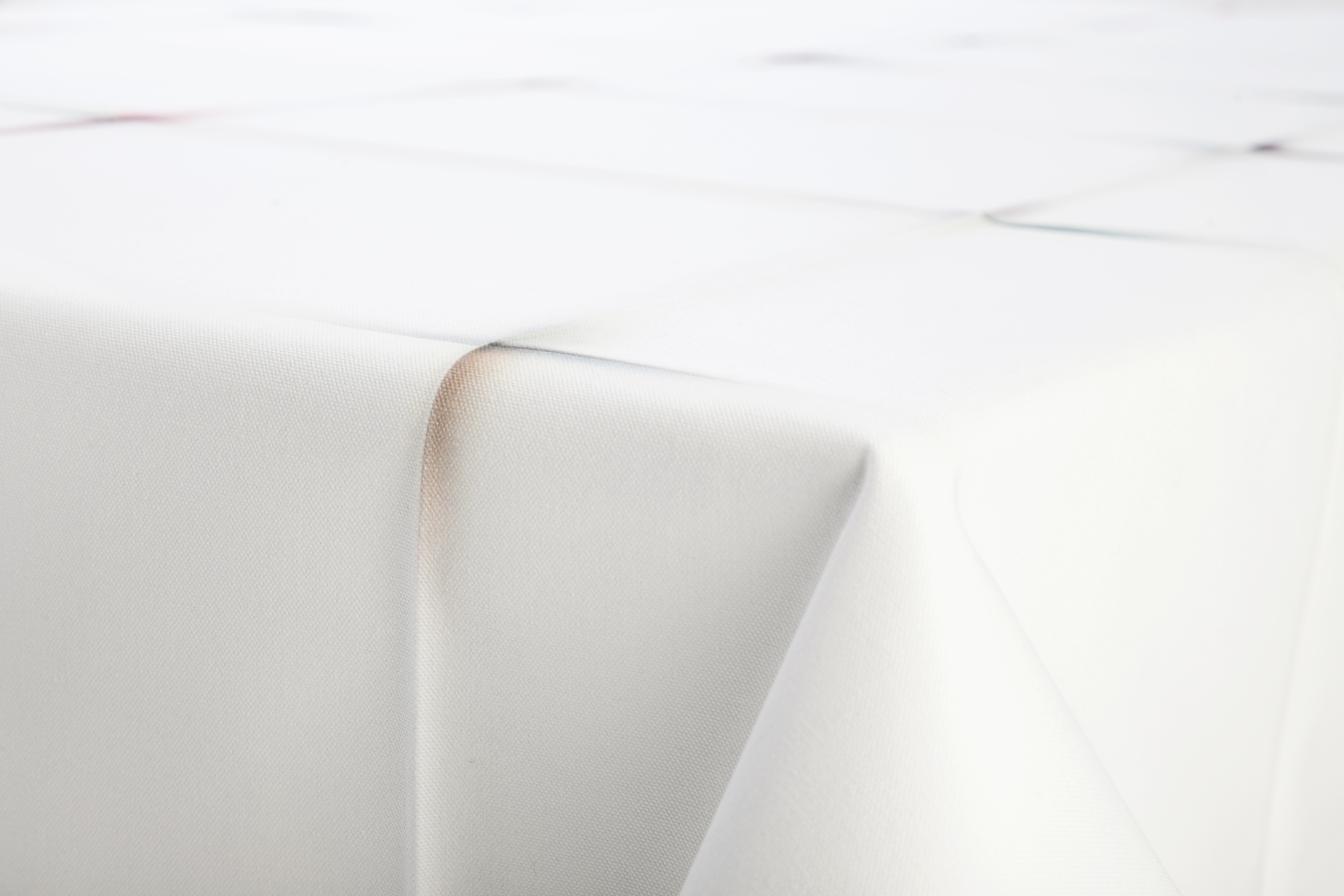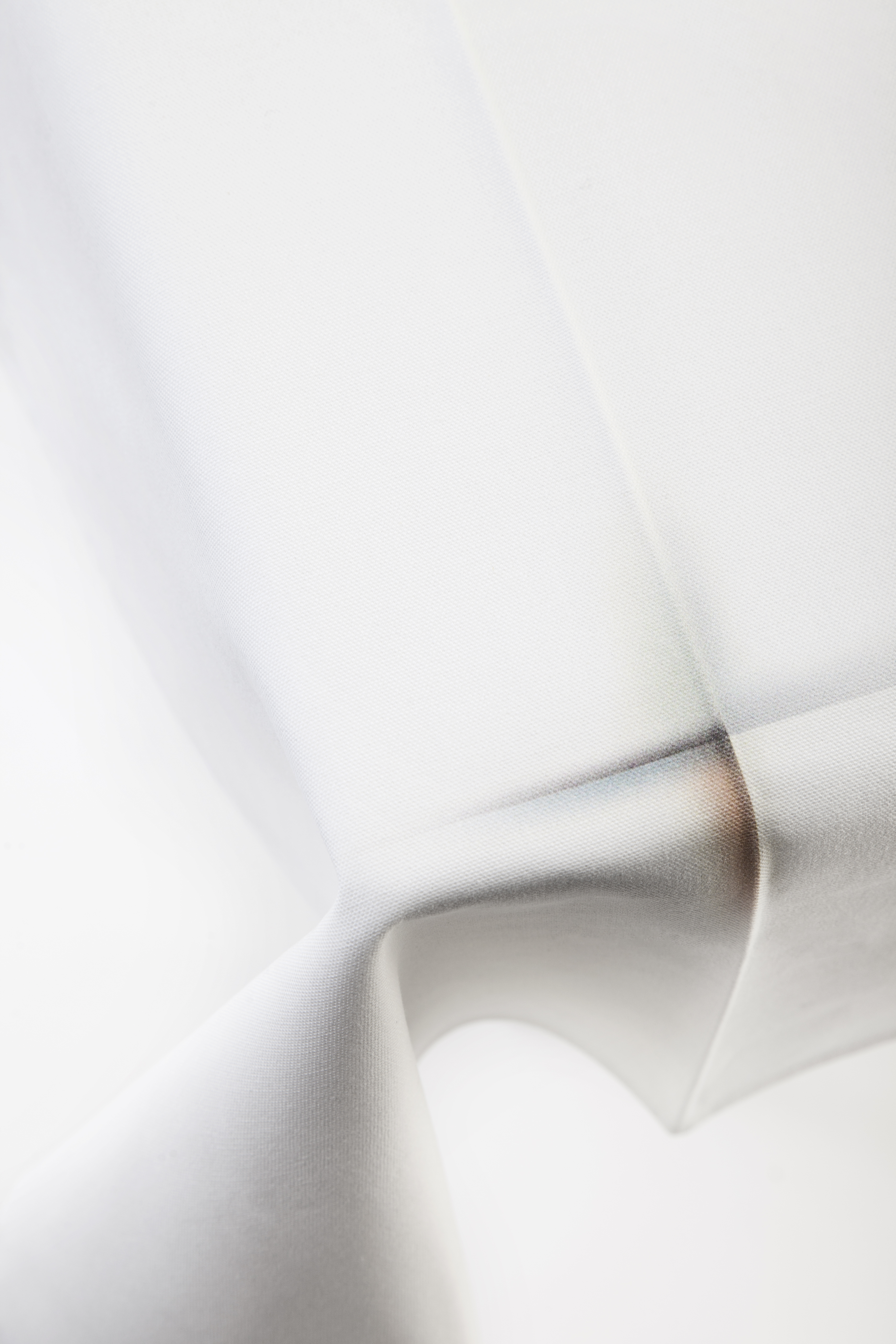Fold Unfold Fly, 2015
MO FUF 15
Most of the time, a tablecloth is kept folded in a closet, waiting for the occasion to dress the table, and as a consequence the folds become an inevitable part of the visual appearance when unfolded on the table. Instead of ignoring the folds as a practical necessity, Fold Unfold Fly makes a point out of them. With a printed pattern of colours bleeding in the folds, the shadows of the folds merge into the pattern to form a subtle and poetic surface, in which the folds have become part of the pattern.
The structure of the printed pattern is based on the grid of the habitual way of folding a tablecloth, transferred from generation to generation through centuries over big parts of the world: Two persons stand in each end of the tablecloth, they centerfold length-wise, tilt, then lift the corners to the centerfold, pull to make the folds fall neatly, move towards each other with the folded tablecloth between them, and again centerfold repeatedly. Most men and women regardless of social status know this almost ritual dance of folding a tablecloth, and often an older member of the family taught them. By putting a narrative to this behavioral pattern, Fold Unfold Fly seeks to give evidence to a cultural heritage of very little attention.
100% Halb Panama cotton canvas, digital textile print, 140×240 cm


